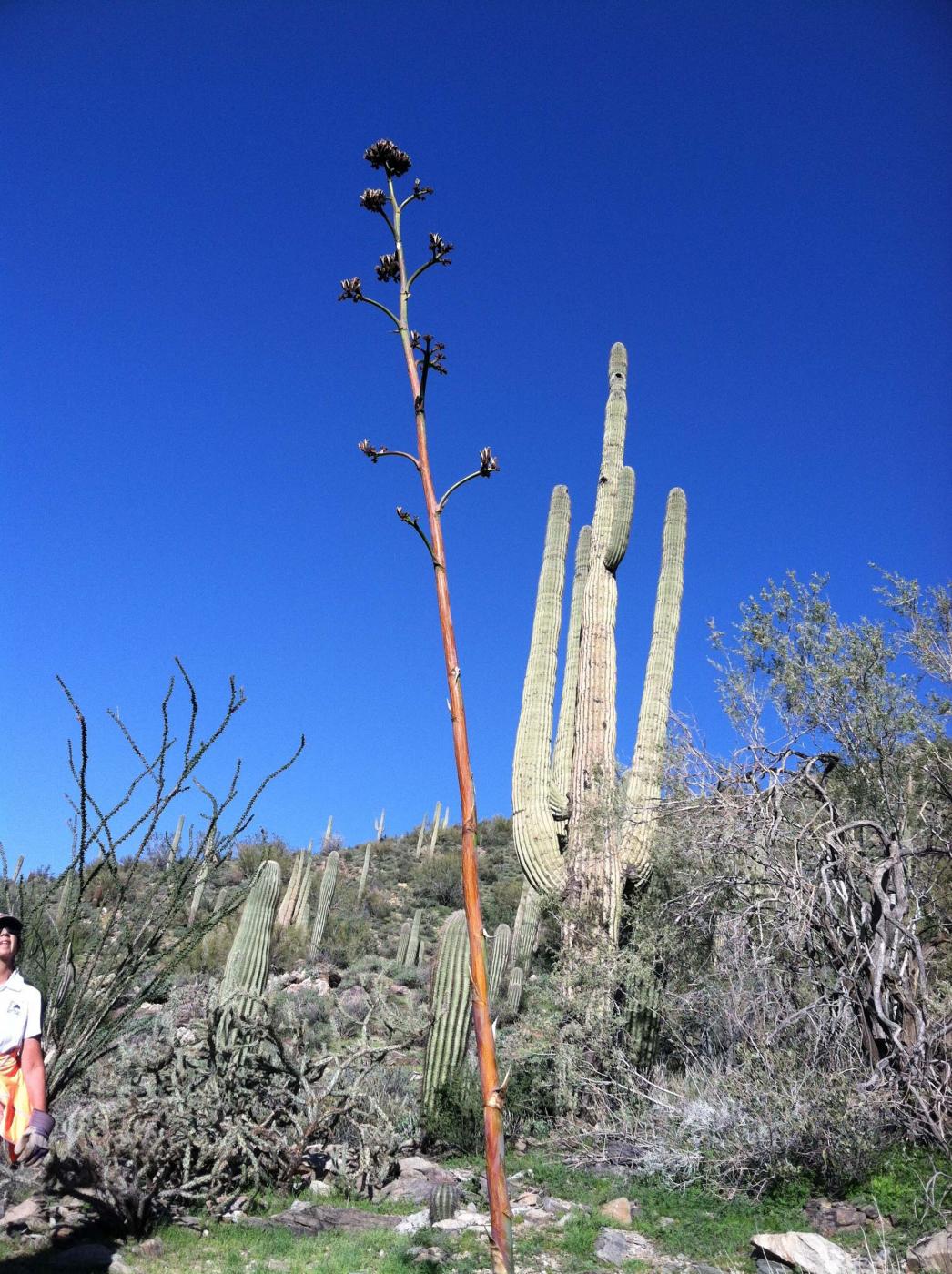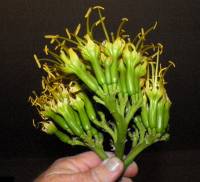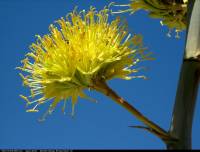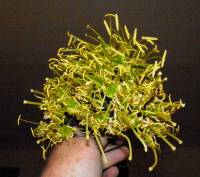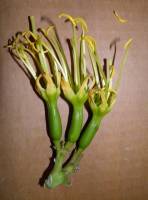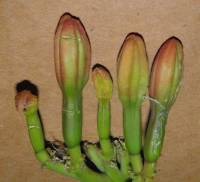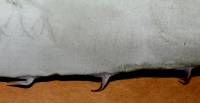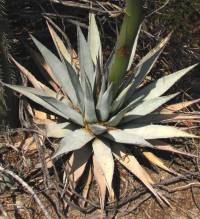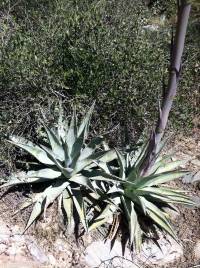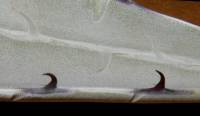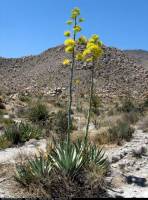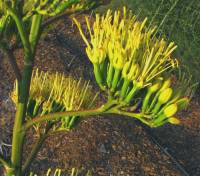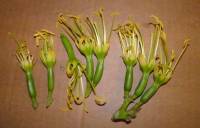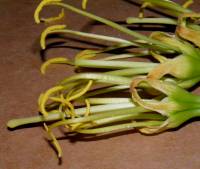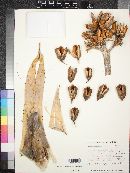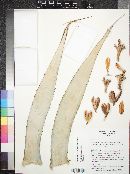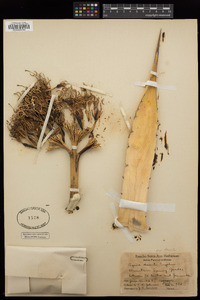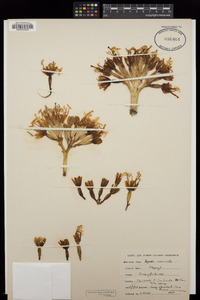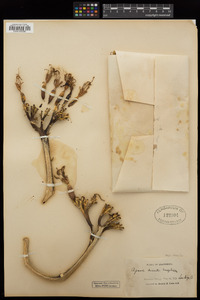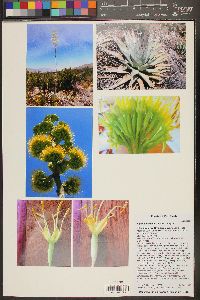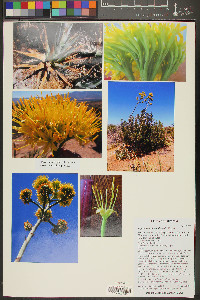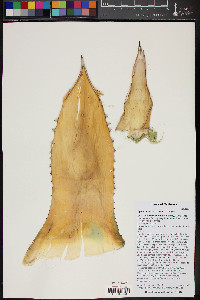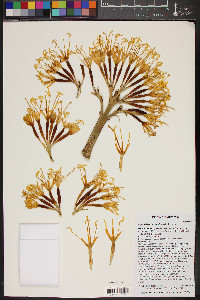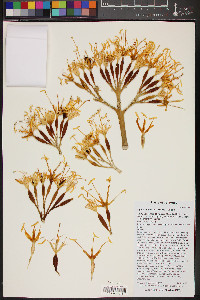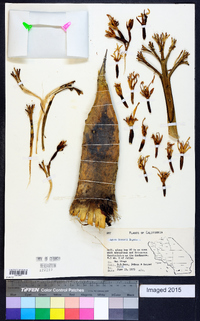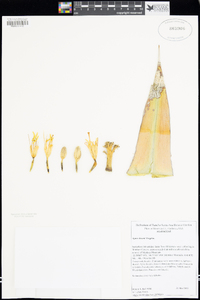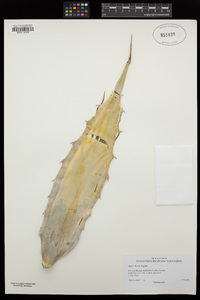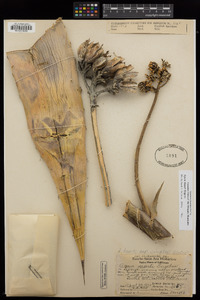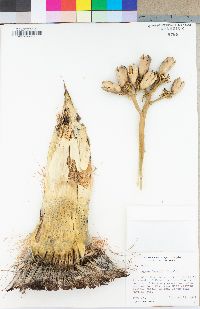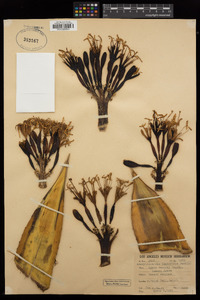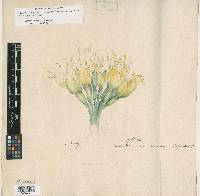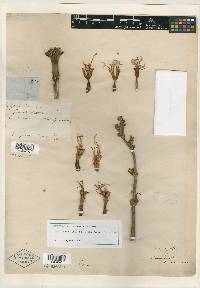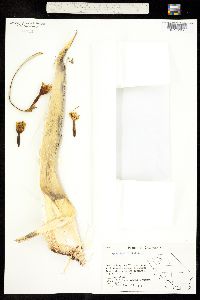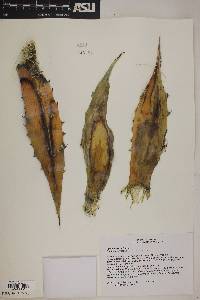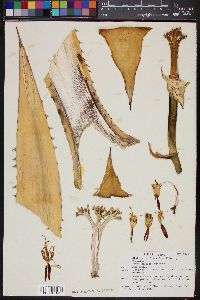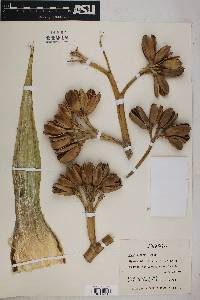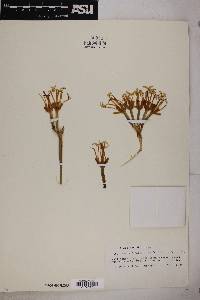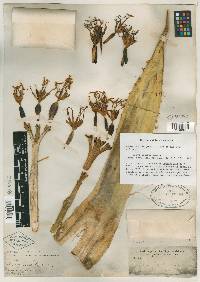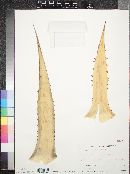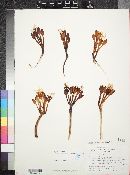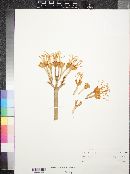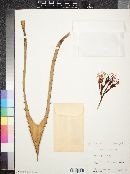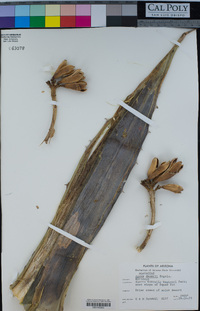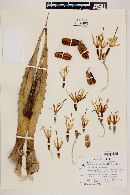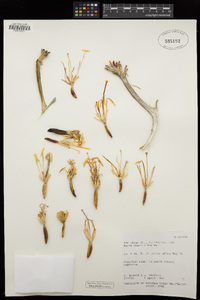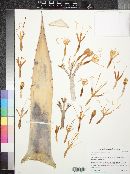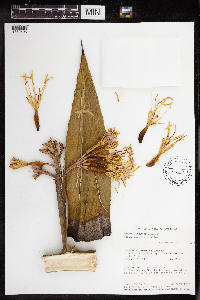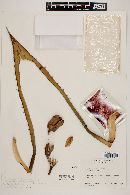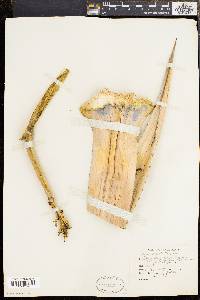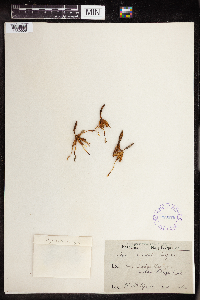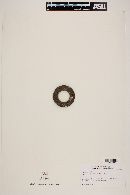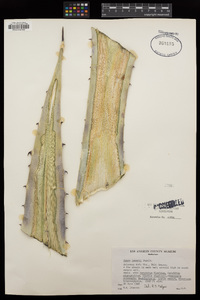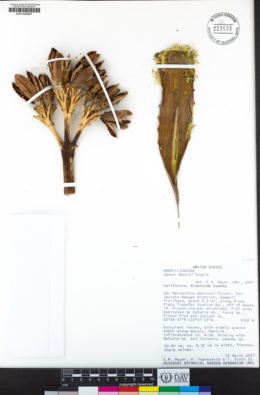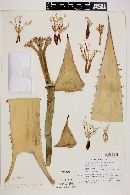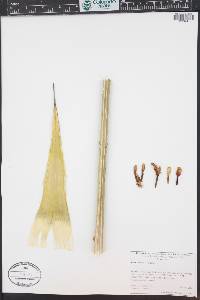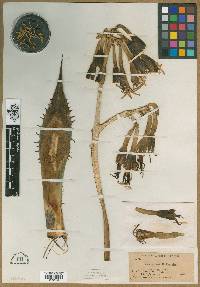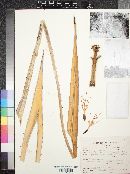Agave deserti
|
|
|
|
Family: Asparagaceae
desert agave, more...Desert Century-Plant (es: amul, lechuguilla, mezcal)
|
Plants acaulescent or short-stemmed, sparsely or prolifically suckering, trunks 0.2-0.4 m; rosettes solitary or numerous, 3-7 × 4-8 dm, compact to rather open. Leaves ascending, widest at base, (20-)25-70 × 4.5-10 cm; blade grayish, gray- or blue-glaucous, yellowish green, or greenish, occasionally cross-zoned, linear-lanceolate to lanceolate, rigid, adaxially concave, abaxially convex; margins straight or undulate to crenate, armed, teeth single, weakly attached, well defined, of 2 types, 2-3 mm or (5-) 6-8 mm, (1-)1.5-3 cm apart; apical spine light or dark brown to gray, subulate to acicular, 2-4 cm. Scape 2-6 m. Inflorescences paniculate, not bulbiferous, open; bracts persistent, triangular, 8-15 cm; lateral branches 6-15, slightly ascending, comprising distal 1/5-1/4 of inflorescence, longer than 10 cm. Flowers 12-48 per cluster, erect, 3-6 cm; perianth yellow, tube shallow, campanulate or funnelform, 3-10 × 9-15 mm, limb lobes wilting soon after anthesis, spreading, equal, 13-20 mm; stamens long-exserted; filaments inserted unequally above middle or at rim of perianth tube, erect, yellow, 2.5-3.5 (-4.2) cm; anthers yellow, 13-21 mm; ovary 1.6-4 cm, neck slightly constricted, 4-6 mm. Capsules short-pedicellate, ovoid to oblong or obovoid, 3.5-5.5 cm, apex beaked. Seeds 5-6 mm. Plant: perennial scapose herb; Rosettes mostly solitary to prolifically caespitose, mostly 30-70 cm tall, 40-80 cm broad Leaves: variable, 25-70 cm long, 4.5-10 cm wide, narrowly triangular lanceolate, lanceolate, to linear-lanceolate, acuminate to long-acuminate, thick, deeply concave towards apex, broad and convex towards base, rigid, ascending, grayish-white, gray, or blue-glaucous to green or yellowish green, often with lighter cross-zone patterns, the margins straight, undulate, or crenate; teeth variable, the larger ones 5-10 mm long, the smaller ones 2-3 mm long, slender, variously curved to reflexed, loosely to firmly attached, 1-3 cm apart, brown to pruinose gray, sometimes with brown ring at base; interstitial teeth absent; terminal spine 2-4 cm long, stout, subulate to aciculate, openly grooved, decurrent to first or second teeth to mid-blade INFLORESCENCE: with scape 2.5-6 m tall, open, usually narrowly to somewhat broadly paniculate, of 6-15 lateral ascending branchlets in upper 1/4 to 1/5 of flowering stalk, the stalk slender to thick, green to glaucous Flowers: in small to large congested clusters, 30-60 mm long; tepals erect to spreading, linear, thin, wilting with anthesis, equal to subequal, 13-20 mm high, 4-6.5 mm wide, yellow to light yellow; filaments 27-42 mm long, unequally inserted 2.75-3.75 mm above base of tube, or subequally inserted at base of tepals, pale yellow, the anthers 13-21 mm long, yellow; ovary 15-30 mm long, with a slightly narrowed to constricted neck 4-6 mm long, yellow to pale green, the style 24-29 mm long when stigma is receptive, pale yellow; floral tube short, 3-10 mm long, 9-15 mm wide, shallow, open-funnelform, angular pale green to yellow Fruit: FRUITS capsules 3.5-5.5 cm long, 1.2-2 cm broad, ovoid to oblong or obovoid, short-stipitate, beaked or rounded to rostrate at apex; SEEDS seeds 5-6 mm long, 4-4.5 mm wide REFERENCES: Hodgson, Wendy. 1999. Agavaceae. Ariz. - Nev. Acad. Sci. 32(1). Hodgson 1999 Common Name: desert agave Duration: Perennial Nativity: Native Lifeform: Succulent Wetland Status: None General: Perennial scapose succulents; rosettes solitary or clustered, mostly 30-70 cm tall and 40-80 cm broad. Leaves: Rigid and ascending, the blades lanceolate, 25-70 cm long by 4-10 cm wide, with long acuminate tips; margins straight, undulate, or crenate, the teeth variable, 2-10 mm long. Flowers: Panicles in a scape 2.5-6 m tall; lateral panicle branches 6-15, ascending, in upper 1/4 of flowering stalk; flowers 3-6 cm long, tepals 6, in 2 whorls, all appearing as petals 1.5-2 cm long by 4-6 cm wide, yellow or light yellow. Fruits: Capsules 3-6 cm long, 1-2 cm wide, ovoid to oblong or obovoid; seeds 5-6 mm long. Ecology: Found in low desert scrub, from 1,000-4,000 ft (305-1524 m); flowers May-July. Distribution: AZ and CA; south to n MEX (Sonora and Baja California) Notes: Only one subspecies (subsp. simplex) is found in Arizona, with solitary compact rosettes; leaves that are light green to light glaucous gray with friable (easily breakable) teeth and a subulate terminal spine, this 3-4 cm long; flowering stalks (scapes) 4-6 m long; and flowers in small clusters. This variety hybridizes with A. schottii ssp. schottii in Pima County and possibly with A. mckelveyana in Yavapai County. Ethnobotany: Used for food, fibers, firewood, and to make various tools. Synonyms: Agave consociata Editor: AHazelton 2015 Etymology: Agave comes from the Greek agauos, "admirable, noble," in reference to the admirable appearance of the century plant; deserti means -of the desert." |
|
|
|

